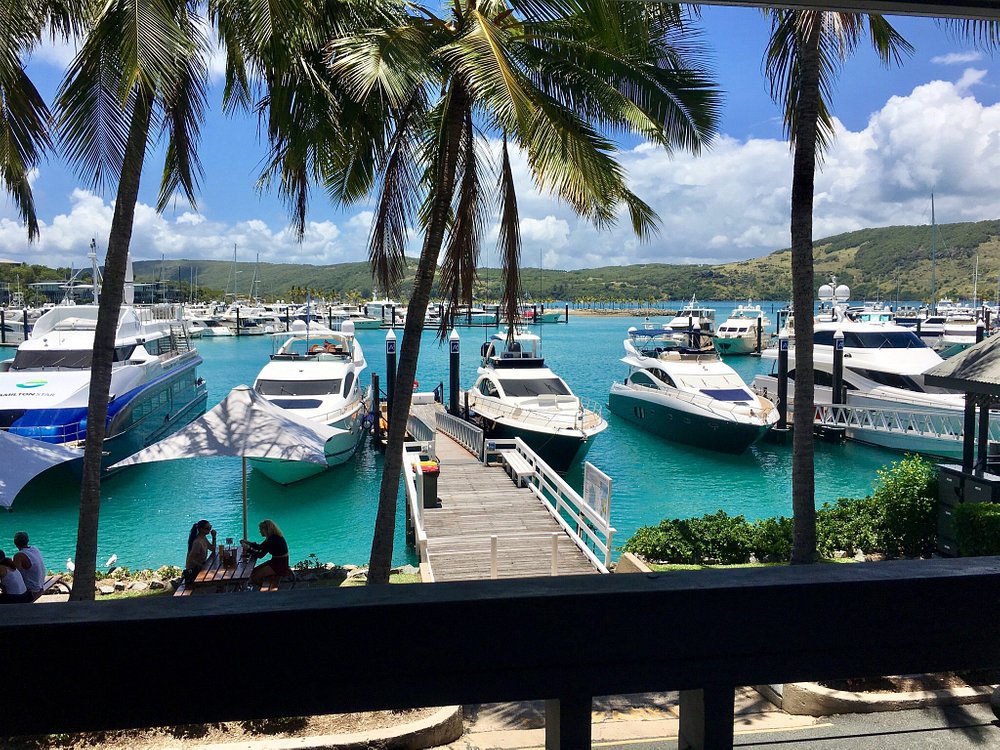The Whitsundays, situated at the epicentre of the Great Barrier Reef, is a favoured destination for both tourists and locals. The region’s pristine waters and diverse marine ecosystem make it an ideal location for shark sightings. It is essential to comprehend shark activity in this area to ensure the safety of swimmers and the conservation of these remarkable animals.
By acquiring a deeper understanding of shark behaviour and the factors that influence their activity, we can effectively safeguard both human and shark populations within this unique ecosystem. Shark activity in the Whitsundays is influenced by a range of factors, including water temperature, prey availability, and human interaction. Researchers can gain valuable insights into shark behaviour in this region by studying these factors.
This knowledge can subsequently be utilised to develop effective shark safety measures and conservation strategies. Furthermore, understanding shark activity in the Whitsundays can help dispel myths and misconceptions surrounding these creatures, promoting a more informed and responsible approach to shark encounters.
The Importance of Understanding Shark Activity in the Whitsundays
Safety of Swimmers and Water Sports Enthusiasts
One of the key reasons why understanding shark activity in the Whitsundays is so important is for the safety of swimmers and water sports enthusiasts. By knowing when and where sharks are most active, authorities can implement targeted safety measures to reduce the risk of shark encounters. This not only protects human lives but also helps to prevent negative interactions between humans and sharks, which can have detrimental effects on both parties.
Conservation of Apex Predators
Additionally, understanding shark activity in the Whitsundays is crucial for the conservation of these apex predators. By studying their behaviour and habitat preferences, researchers can develop effective conservation strategies to ensure the long-term survival of shark populations in this region.
Long-term Sustainability of the Ecosystem
Ultimately, understanding shark activity in the Whitsundays is essential for maintaining the long-term sustainability of this delicate ecosystem. By protecting both humans and sharks, we can ensure the continued health and prosperity of this unique and complex environment.
Shark Species Found in the Whitsundays
The Whitsundays is home to a diverse range of shark species, each with its own unique characteristics and behaviours. Some of the most commonly encountered shark species in this region include the reef shark, tiger shark, and hammerhead shark. These species play a vital role in maintaining the balance of the marine ecosystem in the Whitsundays, and understanding their activity is crucial for their conservation.
Reef sharks are one of the most common shark species found in the Whitsundays. These sharks are known for their distinctive black-tipped fins and are often found in shallow waters near coral reefs. They are generally not aggressive towards humans unless provoked, making them a popular attraction for divers and snorkelers.
Tiger sharks, on the other hand, are known for their large size and voracious appetite. These apex predators are capable of hunting a wide range of prey, including fish, turtles, and even other sharks. Hammerhead sharks are another iconic species found in the Whitsundays.
These sharks are easily recognisable by their unique hammer-shaped heads and are often found in deeper waters near the continental shelf.
Factors Influencing Shark Activity in the Whitsundays
Shark activity in the Whitsundays is influenced by a variety of factors, both natural and human-induced. One of the key factors that influence shark activity in this region is water temperature. Sharks are ectothermic animals, meaning that their body temperature is regulated by the surrounding water.
As a result, they tend to be more active in warmer waters, such as those found in the Whitsundays during the summer months. Another important factor that influences shark activity in the Whitsundays is prey availability. Sharks are opportunistic feeders and will often be drawn to areas with high concentrations of prey.
In the Whitsundays, this can include areas with large schools of fish or migratory patterns of marine mammals. Human interaction is also a significant factor influencing shark activity in the Whitsundays. Activities such as fishing, boating, and diving can attract sharks to certain areas, increasing the likelihood of human-shark encounters.
By understanding these factors, researchers can gain valuable insights into shark behaviour in this region and develop effective strategies for managing human-shark interactions.
Shark Safety Measures in the Whitsundays
In order to ensure the safety of swimmers and water sports enthusiasts in the Whitsundays, a range of shark safety measures have been implemented. These measures aim to reduce the risk of shark encounters while promoting responsible behaviour among both humans and sharks. One of the most common shark safety measures in the Whitsundays is the use of shark nets and drum lines.
These physical barriers are designed to prevent sharks from entering popular swimming areas, reducing the risk of encounters with humans. Another important shark safety measure in the Whitsundays is public education and awareness campaigns. By providing information about shark behaviour and safety tips for swimmers, authorities can help to reduce the likelihood of negative interactions between humans and sharks.
Additionally, many tour operators in the Whitsundays provide shark safety briefings to their customers before embarking on water-based activities. These briefings include information about how to behave around sharks and what to do in the event of a shark encounter. By implementing these shark safety measures, authorities can help to ensure that both humans and sharks can coexist safely in this unique marine environment.
Shark Research and Monitoring in the Whitsundays
Acoustic Telemetry: A Key Method for Shark Research
One of the primary methods used for shark research and monitoring in the Whitsundays is acoustic telemetry. This involves tagging individual sharks with acoustic transmitters and tracking their movements using a network of underwater receivers.
Satellite Tagging: Tracking Long-Distance Movements
Another essential tool for shark research and monitoring in the Whitsundays is satellite tagging. This technology allows researchers to track the long-distance movements of sharks across vast oceanic regions.
Gaining a Comprehensive Understanding of Shark Activity
By combining these tracking methods with data on environmental factors such as water temperature and prey availability, researchers can gain a comprehensive understanding of shark activity in the Whitsundays. This knowledge can then be used to inform conservation efforts and develop targeted management strategies for protecting both humans and sharks in this unique marine environment.
Shark encounters are a common concern for swimmers and water sports enthusiasts in the Whitsundays. However, it’s important to distinguish between myth and reality when it comes to these encounters. While sharks are apex predators and should be treated with respect, they are not mindless killing machines as they are often portrayed in popular media.
In reality, shark encounters are extremely rare, and most species of sharks are not aggressive towards humans unless provoked. One common myth about shark encounters is that all sharks are dangerous to humans. In reality, the vast majority of shark species are not considered a threat to humans.
Many species of sharks are shy and will actively avoid human contact if given the chance. Another myth about shark encounters is that they are always fatal. While it’s true that some shark encounters can result in serious injuries or fatalities, these incidents are extremely rare.







